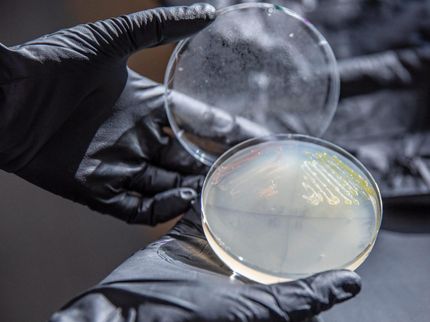Alternative to BPA could come from papermaking waste
Potentially safer, greener alternative
A waste product from making paper could yield a safer, greener alternative to the potentially harmful chemical BPA, now banned from baby bottles but still used in many plastics. Scientists made the BPA alternative from Lignin, the compound that gives wood its strength, and they say it could be ready for the market within five years.
"Approximately 3.5 million tons of BPA are produced annually worldwide," said Kaleigh Reno, a graduate student. BPA is the component that gives shatter-proof plastic eyewear and sports equipment their strength. Additionally, BPA is used in high-performance glues, in the lining of cans and in receipt paper, she explained. The downside is that bisphenol-A, as it's called, can mimic the hormone estrogen, potentially affecting the body and brain. Some experts have suggested that it's unsafe for young children and pregnant women to consume.
To find a safer, more environmentally friendly alternative, Reno and her advisor, Richard Wool, Ph.D., who are at the University of Delaware, turned to lignin. They note that papermaking and other wood-pulping processes produce 70 million tons of lignin byproduct each year, 98 percent of which is incinerated to generate small amounts of energy.
Reno has developed a process that instead converts lignin fragments into a compound called bisguaiacol-F (BGF), which has a similar shape to BPA. She and Wool predict it will act like BPA, as well. "We expect to show that BGF has BPA-like properties within a year," said Wool, with a product ready for the market two to five years later.
Reno is confident that BGF will be a safe stand-in for BPA. "We know the molecular structure of BPA plays a large role in disrupting our natural hormones, specifically estrogen," she said. "We used this knowledge in designing BGF such that it is incapable of interfering with hormones but retains the desirable thermal and mechanical properties of BPA." The researchers also used U.S. Environmental Protection Agency software to evaluate the molecule, determining it should be less toxic than BPA.
And because BGF is made from an existing waste product, Reno believes it will be a viable alternative economically and environmentally. BPA is manufactured from compounds found in oil, a fossil fuel, while BGF's feedstock, lignin, comes from trees, a renewable resource.
The researchers chose BGF based on their unique "Twinkling Fractal Theory," which Wool explains can predict mechanical and thermal properties. "This approach considerably simplifies the design of new biobased materials since we can predetermine properties and screen for toxicity for a broad range of potential compounds from renewable resources such as lignin and plant oils," he says.
Most read news
Organizations
Other news from the department science

Get the chemical industry in your inbox
From now on, don't miss a thing: Our newsletter for the chemical industry, analytics, lab technology and process engineering brings you up to date every Tuesday and Thursday. The latest industry news, product highlights and innovations - compact and easy to understand in your inbox. Researched by us so you don't have to.





























































